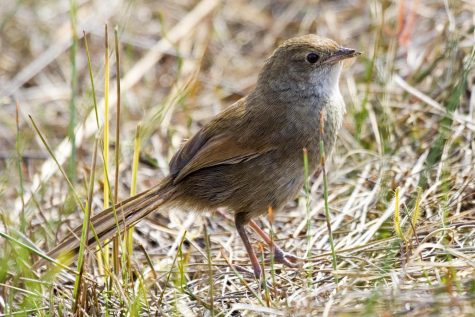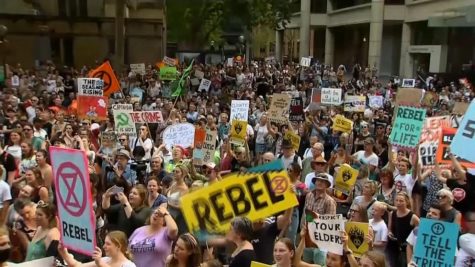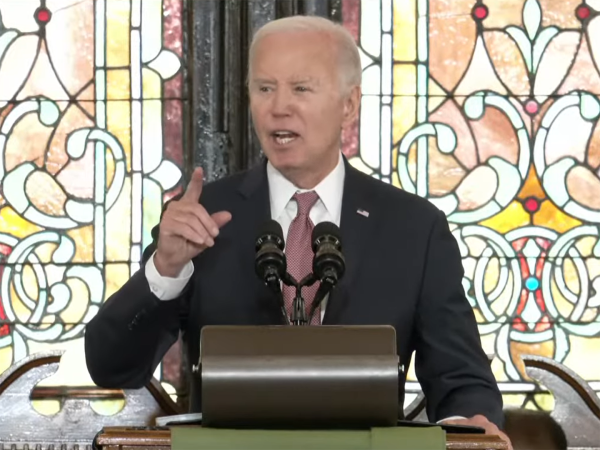Australian Fires Continue to Spread Unchecked
The fires have already consumed an area far greater than that engulfed by the disastrous Brazilian Amazon fires.

A local firefighter attempts to stall the flames from spreading.
Raging across the country since September, bushfires have burned an area of over 25.5 million acres and show no signs of stopping any time soon. Such devastation is seemingly unprecedented in Australia, as it typically experiences fires throughout the summer months from December to March; beginning roughly three months earlier with the help of extreme heat and a severe drought, these fires are an anomaly. Even if more action is taken to bring them to an end, it appears that they will continue to wreak havoc regardless due to their massive scale.
Most of the land covered by the blazes includes bushland, forests, and national parks, all of which host a wide variety of Australia’s unique plant and animal species. The impacts of the fires have reached billions of animals trapped in the smoke and flames, with millions already dead. In particular, the

country’s prized populations of koalas and kangaroos are being killed in high numbers directly by the bushfires, whether by burning alive or suffocating in the thick smoke, and nearly a third of their native habitat has been completely destroyed. Wombats have also suffered extensively, for they experience debilitating panic at signs of heat and smoke and are unable to move quickly with their small legs. Even if other animals are able to temporarily escape the wrath of the fires by burrowing beneath the soil, they will emerge to find unsurvivable terrain and limited, if any, food supply remaining. Although many species, including kangaroos, are spread out throughout Australia and, therefore, do not face a severe threat of extinction, animals that are specialists and thrive in particular niches, such as the eastern bristlebird and corroboree frog, face the danger of being wiped out if the fires reach their habitats. Not only are the immediate effects disastrous enough, but concerns also expand to the ability of these destroyed ecosystems to rebound long-term.

Aid is being sent to starving animals, however; on Sunday, vegetables like carrots were dropped from helicopters down into canyons and bushland in “Operation Rock Wallaby” to feed wallabies, a species that is at a particularly high risk of extinction now. Help from animal care centers, as well as from local citizens who have provided water for the parched, is being administered to care for injured creatures as well.

The calamity does not just extend to animals, though; its disastrous impacts on humans have been, and will continue to be, tremendous. Hundreds of thousands of inhabitants have had to evacuate their homes, with thousands of houses in ruins as of now; the fires have even taken the lives of 26 people. Such damage will cause economic costs surpassing $100 billion. Further, average temperatures have reached over 105 degrees Fahrenheit, meaning that heat exhaustion, heat stroke, and other adverse reactions may occur. Health hazards pertaining to breathing are more serious than ever, for about 1.3 billion acres of sky are contaminated by ash, causing the most widespread period of poor air quality in Australia’s history. For reference, this plume is about half the size of the continent of Europe; this smoke has moved beyond its domestic borders all the way to South America, thereby making the bushfires a global threat.
One of the most recent updates on the situation comes from January 10 when three wildfires south of the Snowy Mountains combined to form a single mega-blaze, which covers more than 2,400 square miles and has high winds coupled with severe heat. These winds pose a danger perhaps more concerning than the high temperatures of the fire itself, for they have the likelihood of spreading the flames at a terrifyingly quick rate in unpredictable directions. Such a crisis has urged citizens who believe the government is not doing enough to fight climate change to protest, calling for Prime Minister Scott Morrison, who decided to take a vacation to Hawaii in the midst of the fires, to step down from office.

Within the past month, increased awareness about the disaster has reached people all over the world through television, social media, and other means. Numerous celebrities have raised funds for animal rescues and firefighting efforts, including Pink (who has donated $500,000) and Nicole Kidman and Keith Urban, who matched Pink’s monetary support together. Celeste Barber, an Australian comedian, began a fundraiser that has already raised $26 million. With such public figures using their platform for positive change, you may find yourself wondering how you can help. The Australian Red Cross has been assisting those who have had to evacuate and is in desperate need of volunteers, along with more donations. You can also donate to the Country Fire Authority in Victoria and the NSW Rural Fire Service to assist firefighting efforts, and Wires, a wildlife rescue group, is also accepting money to carry out animal evacuation and treatment.
Information for this article was retrieved from a wide range of sources, including CNN and Fox News. Please see the following links to read more:
https://www.foxnews.com/world/australia-bush-fires-animals-vegetables-helicopter
https://www.cnn.com/2020/01/07/australia/australia-fire-wildlife-deaths-intl-hnk-scli/index.html












